Open source UAS processing on cloud infrastructure
GIS595-004/603; MEA592-006/601:
UAS Mapping for 3D Modeling
Anna Petrasova, Vaclav Petras, William Reckling, Helena Mitasova
Center for Geospatial Analytics,
North Carolina State University
Outline
- Parallel computing concepts
- Parallel computing infrastructure
- Software licences and open source software
- Overview of open source tools for UAS processing
- OpenDroneMap
Parallel processing
- Structure from Motion pipeline is typically more demanding than what we are used to in geospatial analysis
- solution is parallel processing (and more efficient algorithms in long term)
- types of parallel processing:
- CPU — tens of parallel processes
- GPU — hundreds and thousands of parallel processes
- cluster with nodes — each node has tens of CPUs/GPUs
CPUs in geospatial context
- Just because your computer has many CPUs, that doesn't mean a computation uses them
- Implementing parallel computing with CPUs can be done on the level of algorithm or user level
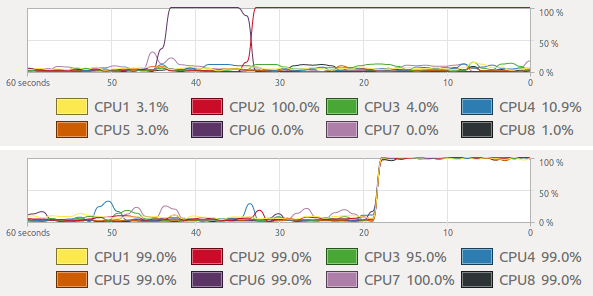
CPUs in geospatial context: approaches
- Embarassingly parallel problems — independent computations (e.g., solar radiation for more days)
- Tiling approach — divide spatial domain into tiles possibly with overlaps (e.g., interpolation)
- Complex approaches — depend on algorithms, often use tiling with communication between tiles (e.g., hydrology)
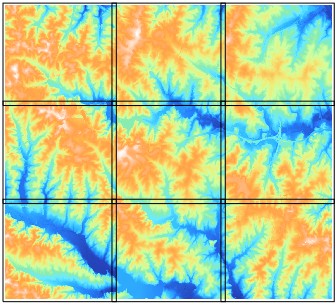
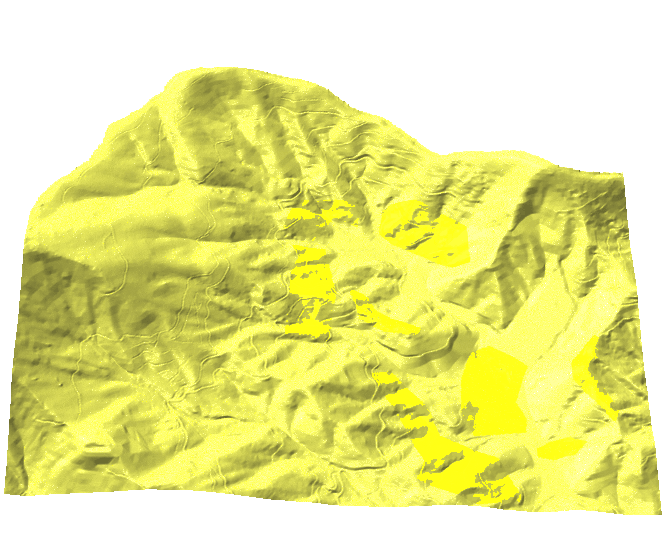
CPUs in geospatial context: (dis)advantages
Benefits:
- Many problems fall into first two categories
- It's fairly easy for users to parallelize their computations using Python, or background processing
Problems:
- Overhead can cause a program to run slower than on one CPU (running on n CPUs does not mean n-times speed-up)
- We might not have enough memory for all processes
GPU computing
- suitable for large number of very simple computational tasks with minimum memory requirement
- hardware specific (e.g., CUDA platform is for Nvidia only)
- complex programming APIs
SfM parallel computing
- different parts of the pipeline are suitable for different parallelization types
- e.g., PhotoScan can use GPU for image matching and depth maps creation
Parallel computing infrastructure (1)
- laptop/desktop (low power, 8 CPUs) — for individuals
- server (medium power, tens of CPUs)
- typically remote access, but physical machine is accessible
- hardware owned by organizations, companies

Parallel computing infrastructure (2)
- cloud (medium power, tens of CPUs)
- connected computers, actual hardware/OS hidden through virtualization
- easy to setup from user point of view
- computing is often not the primary application
- e.g., NCSU VCL, Amazon Web Services

Parallel computing infrastructure (3)
- HPC, supercomputers (high power, thousands of CPUs)
- connected nodes, unix-based OS (e.g., Linux)
- not all programs can take advantage of it
- e.g., NCSU HPC: henry2
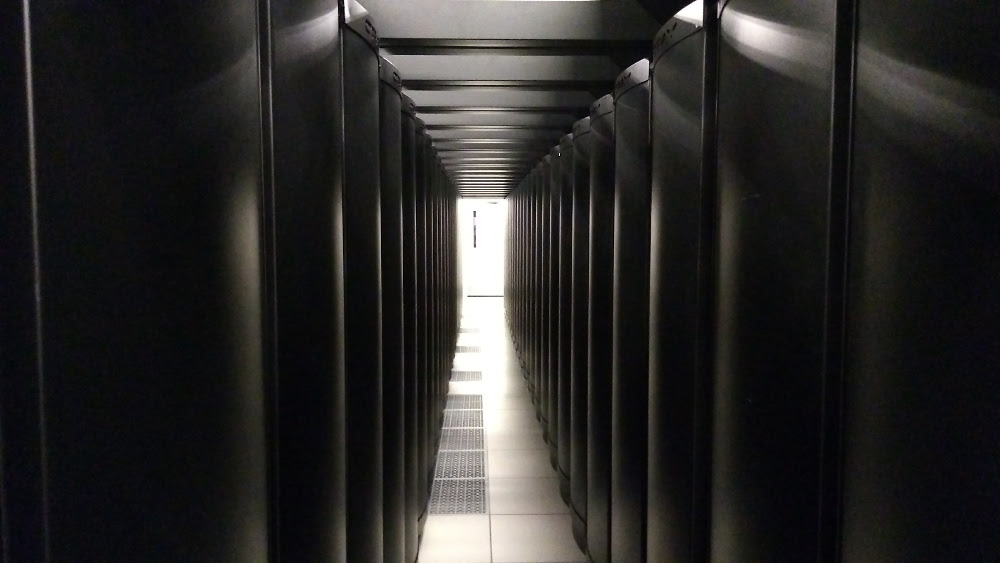
Supercomputer Blue Waters, NCSA, Illinois
PhotoScan Requirements
PhotoScan CPU
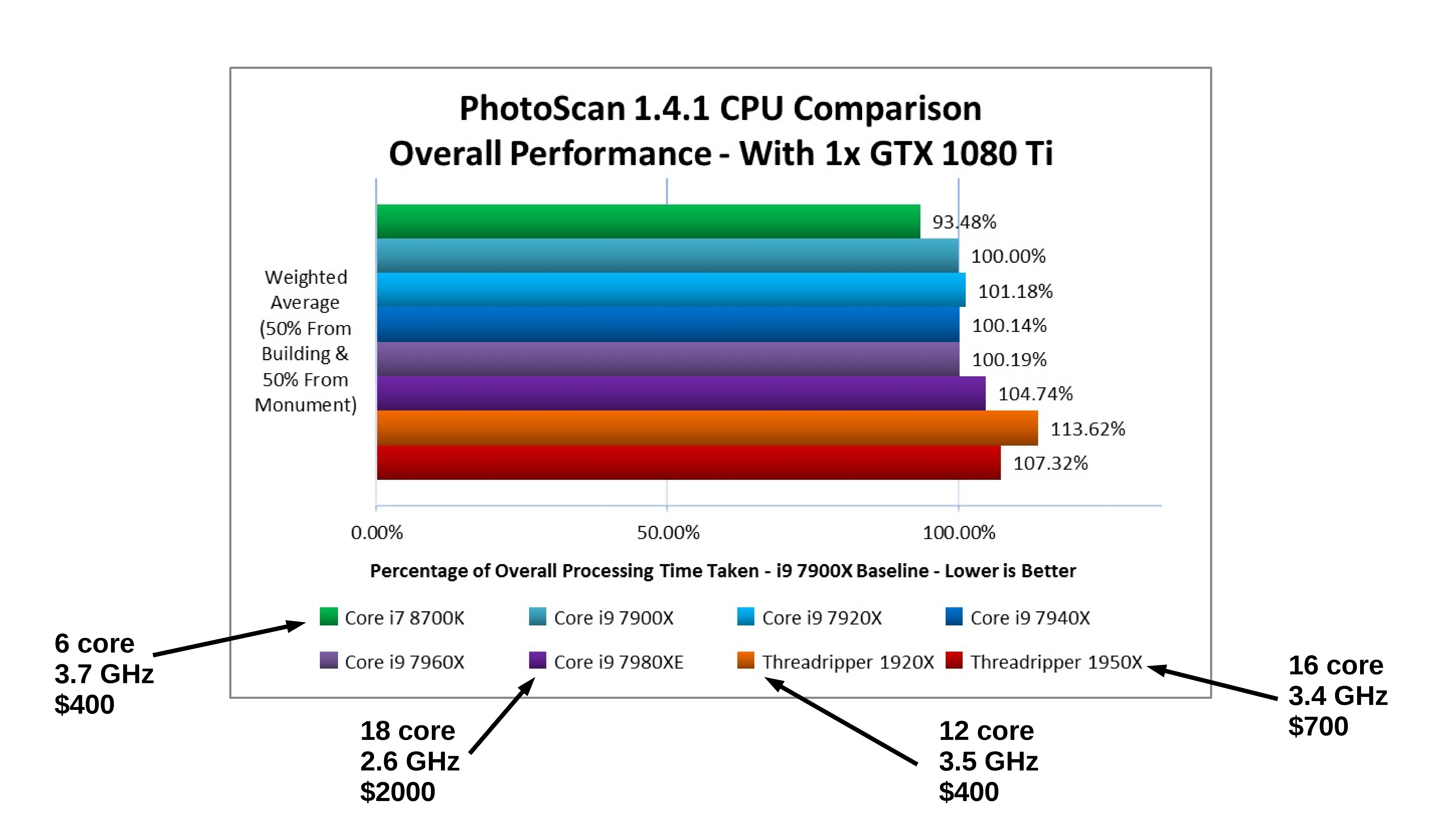
https://www.pugetsystems.com/recommended/Recommended-Systems-for-Agisoft-PhotoScan-145/Hardware-Recommendations
PhotoScan GPU
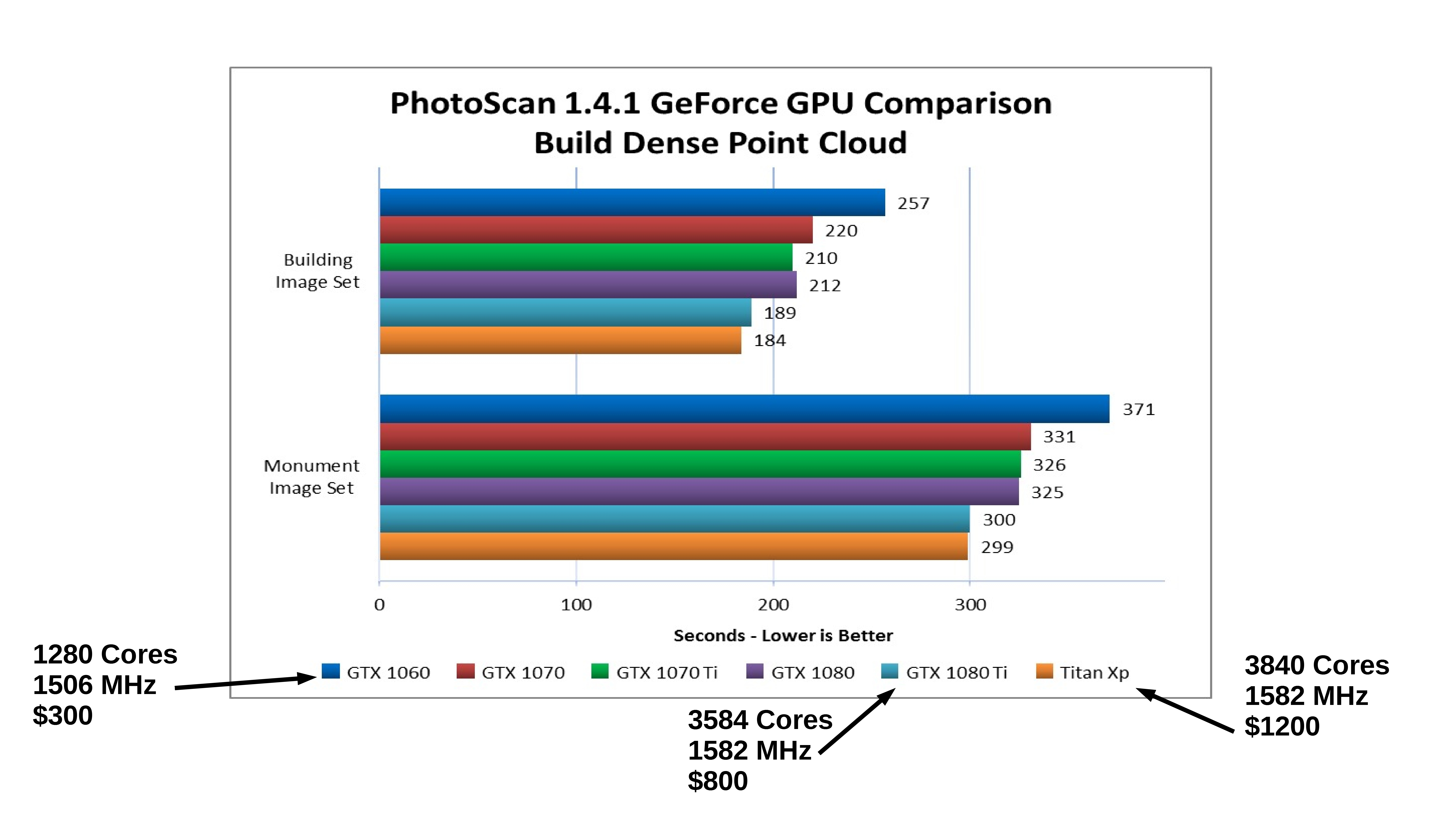
https://www.pugetsystems.com/recommended/Recommended-Systems-for-Agisoft-PhotoScan-145/Hardware-Recommendations
PhotoScan Multiple GPUs

https://www.pugetsystems.com/recommended/Recommended-Systems-for-Agisoft-PhotoScan-145/Hardware-Recommendations
PhotoScan Hard Drive Write Speeds
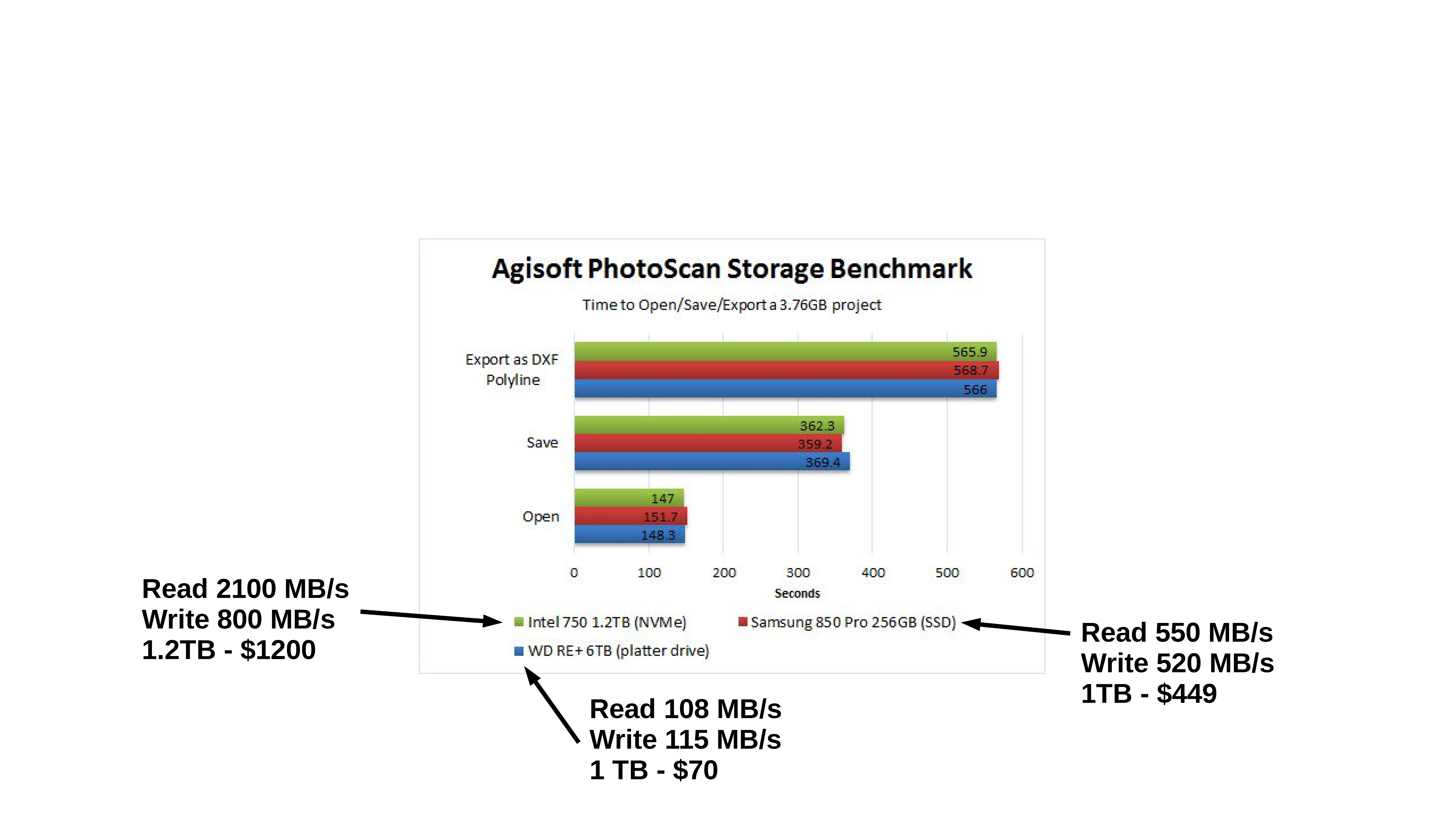
https://www.pugetsystems.com/recommended/Recommended-Systems-for-Agisoft-PhotoScan-145/Hardware-Recommendations
PhotoScan Memory
Local Workstation
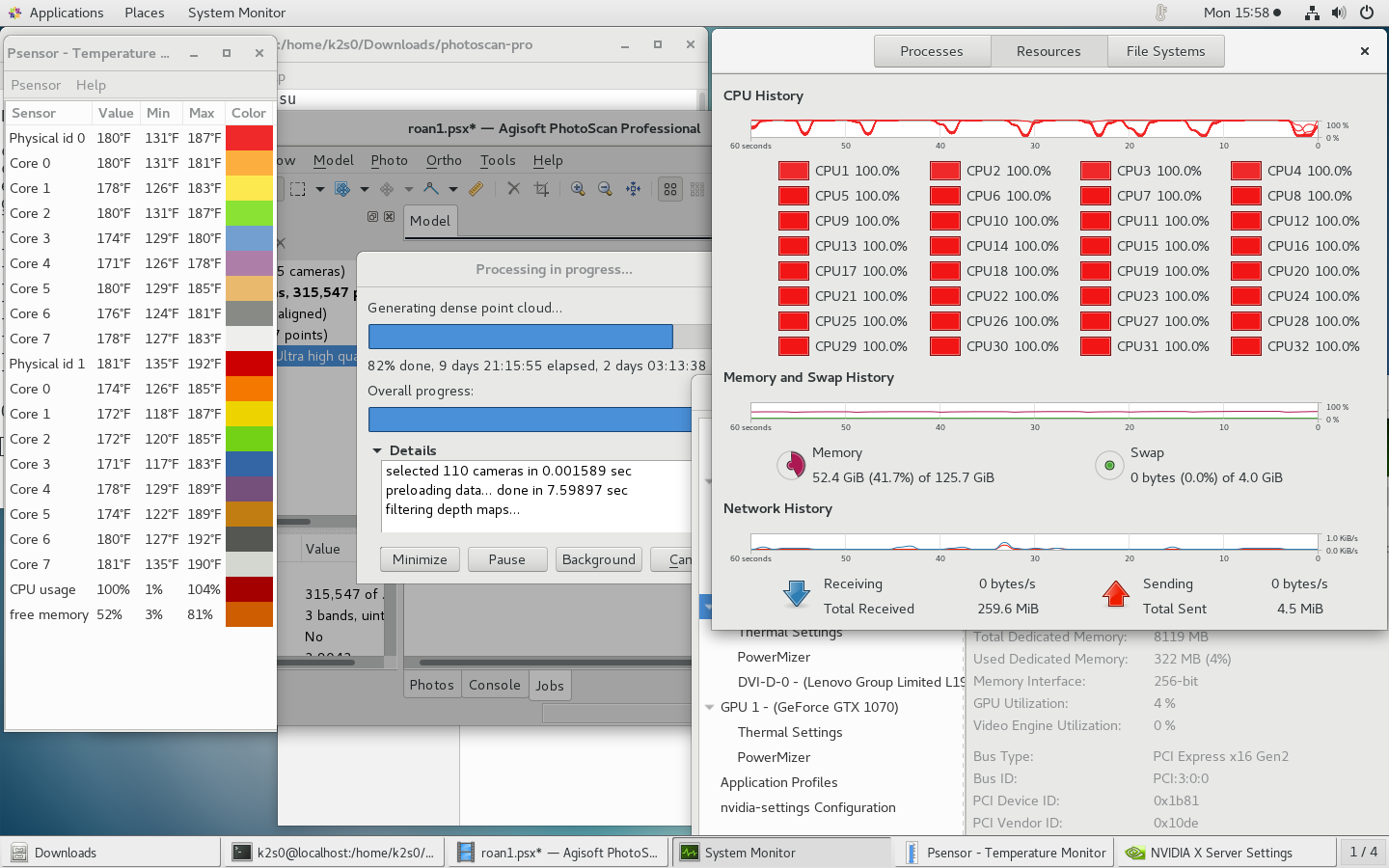
Alternatives- Henry 2
Alternatives- AWS

Software licensing and cloud
When using any software, you need to deal with licenses. Proprietary software:
- often has educational vs. commercial licenses
- typically needs licences for each computer/user — may require special licenses for cloud (e.g., Agisoft floating licences), or per computer cores (e.g., Oracle)
- price may be included in the cost of cloud virtual instances (e.g., Windows vs Linux)
Software licensing and cloud
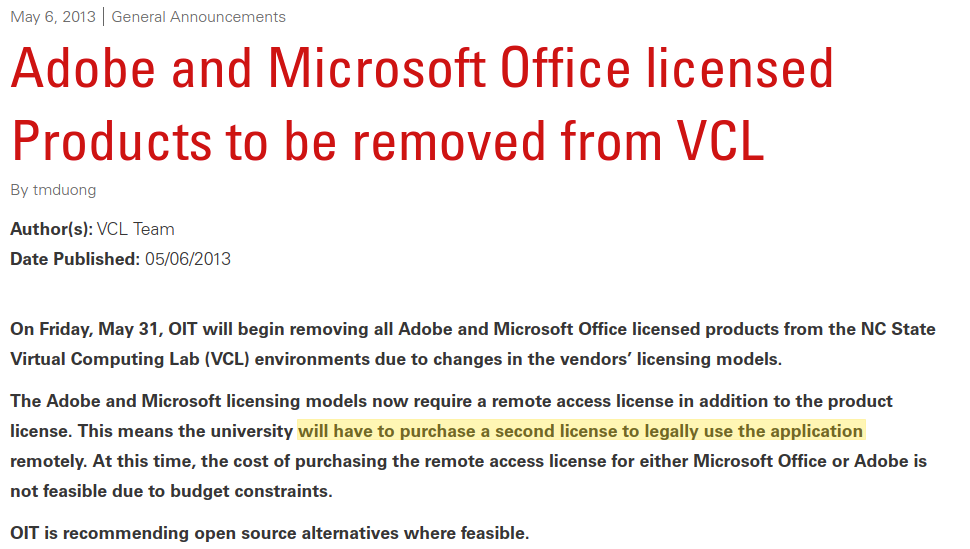
Source: NCSU VCL announcements
Software licensing and cloud
Free and open source software:
- is free to run, study, modify and distribute
- users can use it for any purpose and don't have to worry about the license
- most web and clouds are based on open source technologies
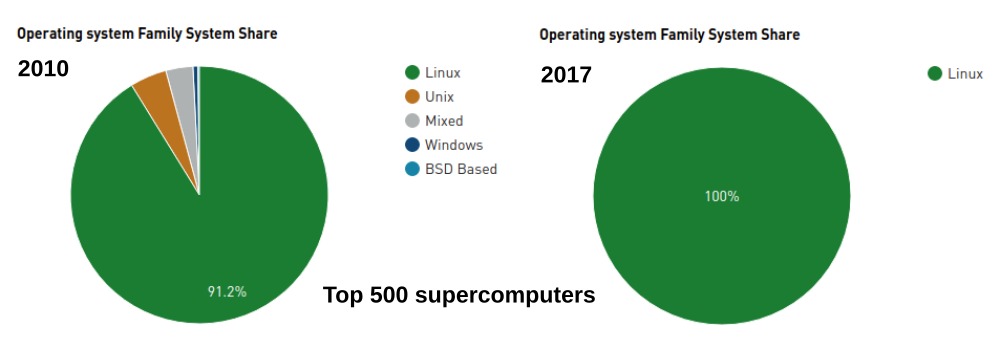
Overview of open source tools for SfM
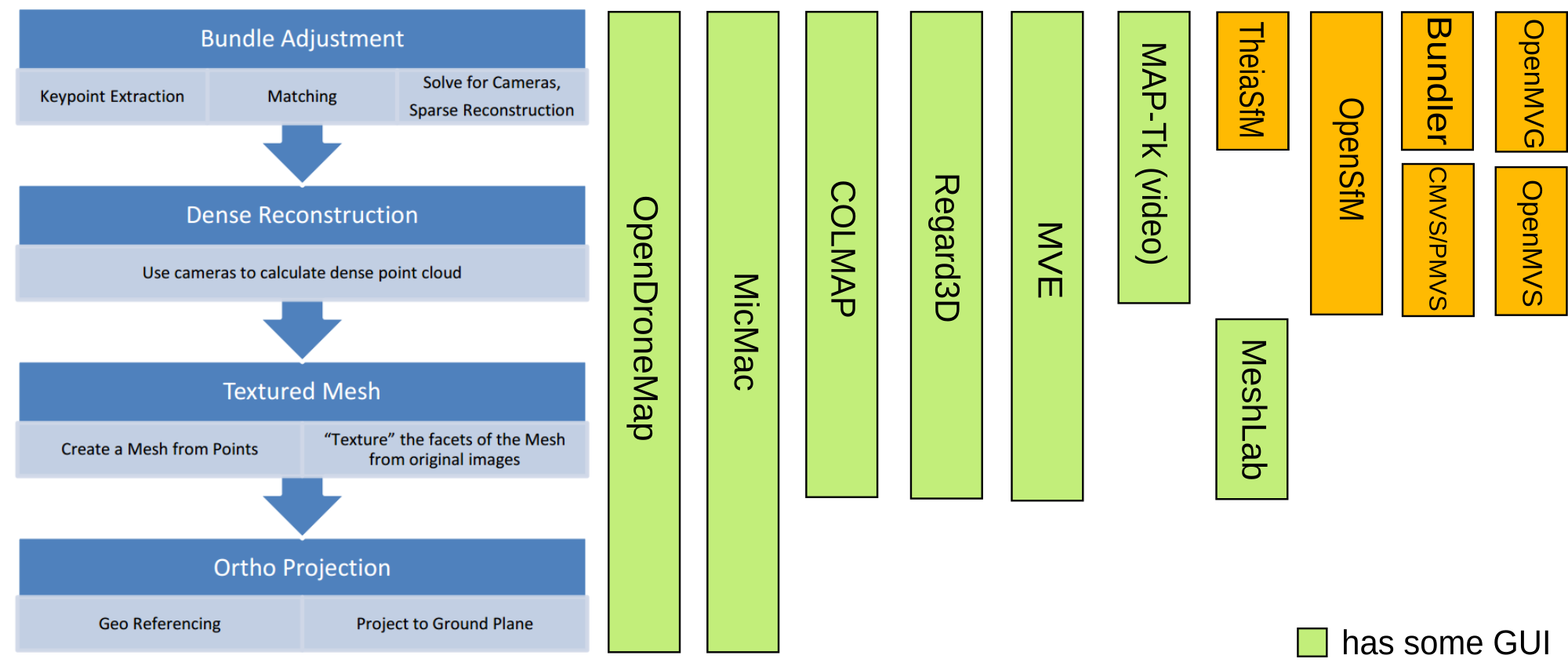
Based on and updated: Kirk McKelvey,
From UAV to Orthomosaic: Building a Toolchain, FOSS4G NA 2016
See curated list of papers and resources linked to open source 3D reconstruction from images
MicMac
- Developed by French National Geographic Institute (IGN)
- Set of command-line tools for the different parts of imagery processing
- Steep learning curve, see PDF documentation
- Reconstruction results similar or better than other SfM software, see for example this paper or a video
- Not very active project, mostly one developer
- Recent overview paper about MicMac

Full pipeline, some parts are using other projects:
- Structure from Motion (SfM) + dense cloud: OpenSfM by Mapillary
- Mesh Generation
- Texturing / Blending: MVS-Texturing (part of MVE)
- Ortho photo creation
- PDAL for DSM generation
ODM vision: Open Data Ecosystem
The aim is for the toolchain to also be able to optionally push to a variety of online data repositories:
- high-resolution orthos to OpenAerialMap
- point clouds, DSMs to OpenTopography
ODM advantages
ODM drawbacks
- GCPs need to be used during reconstruction process to increase precision and avoid 'doming effect'
- GUI for GCPs identification is still in development
- missing GPU acceleration
ODM results
Improvements in mosaicing:

ODM results
Difference between lidar and ODM reveals doming effect: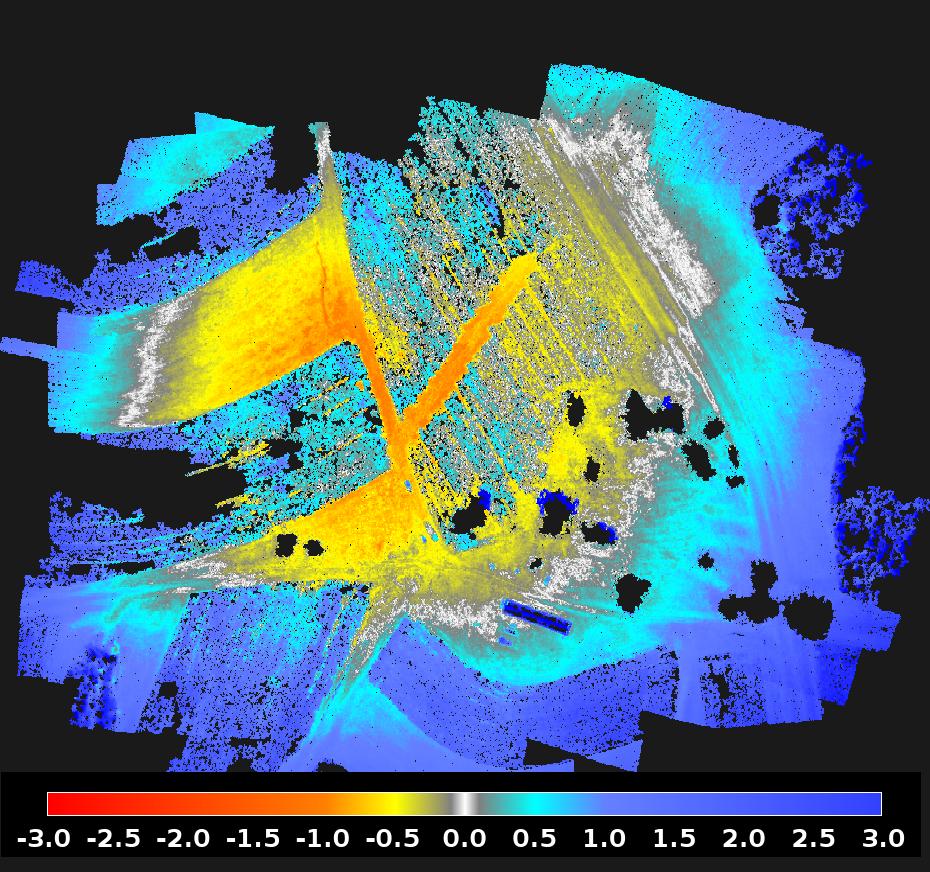
Assignment
We will run ODM on Ubuntu VCL:
- Mid Pines sample dataset
- using ODM web interface WebODM
- using Docker — through command line (optional)
What is Docker?
- tool for easy deploying and running applications by using containers
- containers allow to package an application with dependencies
- no installation, keeps your system clean
- ensures application runs no matter what customized settings your machine has
- similar to Virtual Machine, but much more efficient, takes up less space
- based on Linux, but there is also Docker for Windows
WebODM: ODM with web browser interface
- allows viewing results as a 2D webmap, 3D point cloud
- learn more at WebODM
- we will deploy WebODM using Docker

What we have learned
- what is parallel computing about
- what types of computing infrastructure are available
- software licensing and cloud
- current state of open source tools for SfM